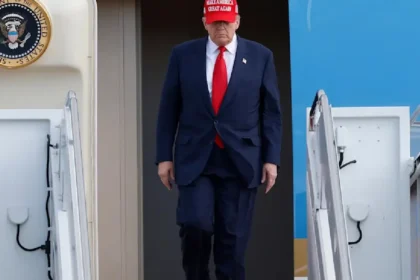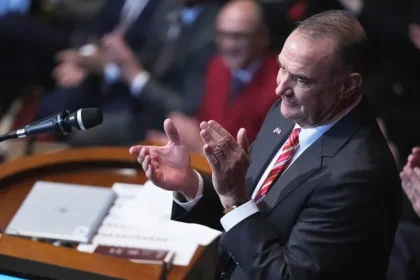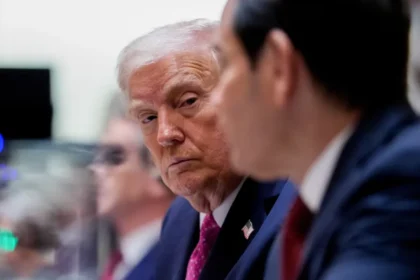Millions face reduced food‑aid as USDA orders states to roll back payments
More than 42 million Americans who rely on the Supplemental Nutrition Assistance Program (SNAP) were thrust into uncertainty this week after the United States Department of Agriculture (USDA) instructed states to withdraw efforts to distribute full November benefits. The move, which follows a court challenge and a federal government shutdown now stretching past a month, has raised fresh scrutiny of President Donald Trump’s handling of one of the nation’s largest social safety nets.
A sudden reversal
Just days ago, several states had begun processing full SNAP benefit payments for November, acting under earlier USDA guidance and court orders. But in a late memorandum to state agencies, the USDA announced that those actions were unauthorized and must be reversed. States were told instead to issue only a portion of benefits approximately 65 percent of normal levels unless full funding is restored. The notice warned that failure to comply could result in cancellation of federal funding for state administrative costs or liability for “over‑issuances.”
Under federal law, SNAP benefits are funded by Congress. With the government shutdown causing a lapse in regular appropriations, the USDA says that contingency funds are inadequate to cover full payments. The Trump administration argues that diverting funds from other critical programs such as school‑meal or disaster relief funds would undermine other services, and that Congress must act to re‑open the government and resume full funding.
Why Trump is central to the story
President Trump has repeatedly blamed the shutdown on Democratic lawmakers and tied SNAP payments to broader funding negotiations. In a social‑media post earlier this month, he declared that full SNAP benefits would remain contingent on the reopening of government and accused the prior administration of “haphazardly handing” benefits to undeserving recipients. His position has been echoed by USDA officials who state that they are acting under his direction and guidance.
Critics argue that the decision to pause full SNAP benefits disproportionately affects children, seniors, and disabled individuals populations that Trump regularly claims to protect through his rhetoric on welfare reform. Advocates for low‑income Americans say the pause conflicts with the administration’s messaging on strengthening the social safety net.
The legal battle
Legal challenges erupted when a federal judge in Rhode Island ordered full payments for November. The Trump administration promptly appealed, and the Supreme Court issued a brief stay while the case moves through the appeals process. That stay allowed the USDA to issue the reversal memo to states, even while questions about legal authority continue to swirl. The administration insists it is acting within its rights given the absent federal funding, whereas opponents maintain that the decision violates statutory obligations and risks widespread hardship.
Impact on states and recipients
States are scrambling. Some had already loaded benefits onto electronic cards; now they must reverse those payments or face penalties. Food‑bank networks are bracing for increased demand, warning that many households will experience delays or reduced benefits even as the holiday season approaches. State officials say the lack of clear, consistent federal guidance has caused confusion and administrative costs.
For recipients, the reduction may translate into fewer grocery trips, heavier reliance on food pantries, or skipping other critical expenses like medications. Many households already face tight budgets, and the sudden reversal undermines planning and stability. Advocates say the pause is tantamount to a “man‑made crisis” given the timing and stakes.
Broader significance
The SNAP program is the largest federal nutrition assistance initiative, costing approximately $8‑9 billion per month in recent years. The decision to alter payments mid‑stream raises broader questions about governance, the resilience of safety nets during fiscal crisis, and how leadership handles disruptions. For President Trump, the episode underscores the tension between his populist rhetoric on protecting American families and the operational realities of a shutdown‑driven funding freeze.
It also places spotlight on how critical federal services can hinge on political negotiations and judicial rulings, rather than consistent policy. The optics are particularly stark: while the administration speaks of supporting working families, millions are facing cutbacks in food aid until political gridlock ends.
What comes next
As the appeals process continues, the Trump administration and USDA could move to allocate additional contingency funds, or Congress could pass a resolution to restore full funding. Either path remains uncertain and may be drawn out through the holidays. States may begin issuing partial benefits immediately raising concerns that any further delays will deepen hardship.
On the political front, this episode may become a talking point in upcoming electoral cycles. The opposition will highlight the pause as evidence of vulnerability in the social safety net under Trump’s watch, while supporters may argue the move is a necessary fiscal discipline during a shutdown.
Final thoughts
President Donald Trump’s decision to pause full SNAP benefits during the government shutdown may have immediate consequences for millions of Americans, and longer‑term implications for how public policy treats the financially vulnerable during political stalemate. While proponents argue that abandoned funding mandates are unsustainable amid a shutdown, critics view the pause as a stark failure to safeguard the most basic welfare provisions. In either case, the moment puts the administration’s priorities and crisis‑management under intense scrutiny as the nation faces escalating hardship.











